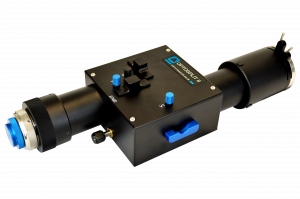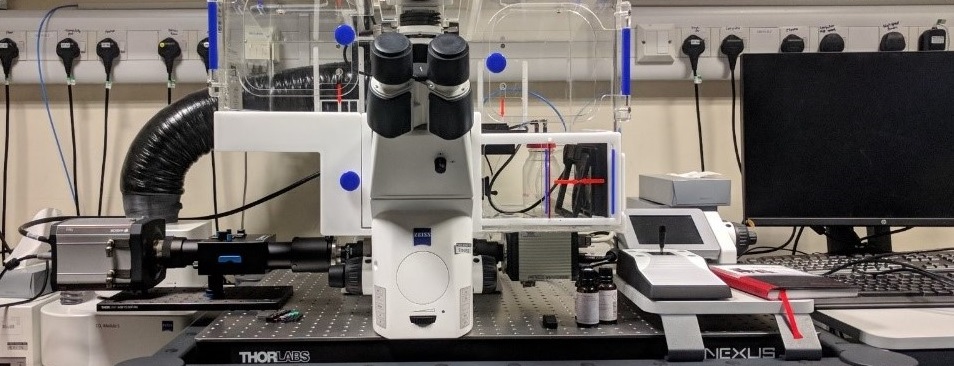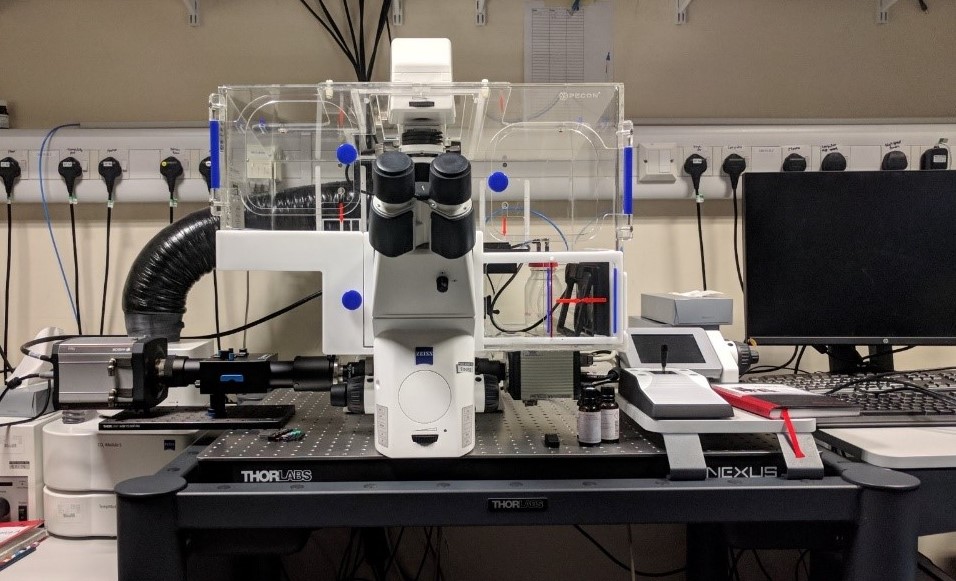The laboratory of Dr Richard Wheeler studies Leishmania parasites, which are highly motile unicellular eukaryotes; this motility is vital for their life cycle. The unicellular Leishmania parasite is responsible for causing the disease leishmaniasis, which affects millions of people in the developing world. A long-standing goal of the Wheeler group is to be able to visualise the dynamics of intracellular fluorescently tagged proteins during movement, particularly proteins in the flagellum. This presents a challenge due to the high frame rates (>100 frames per second) required to ‘freeze’ flagellar movement combined with the necessity of simultaneous capture of two fluorescent channels to analyse co-localisation.

OptoSplit II dual emission image splitter
Traditional approaches to dual wavelength imaging such as a motorised filter changer or an additional camera and beamsplitter are less than ideal in this scenario, as the switching speed of an electronic filter changer limits temporal resolution, whilst a second camera adds cost and complexity to a microscope system.







